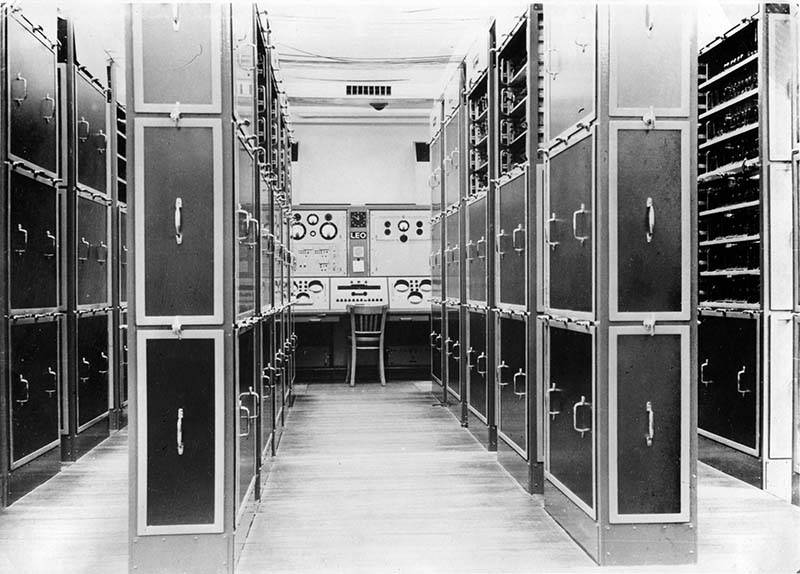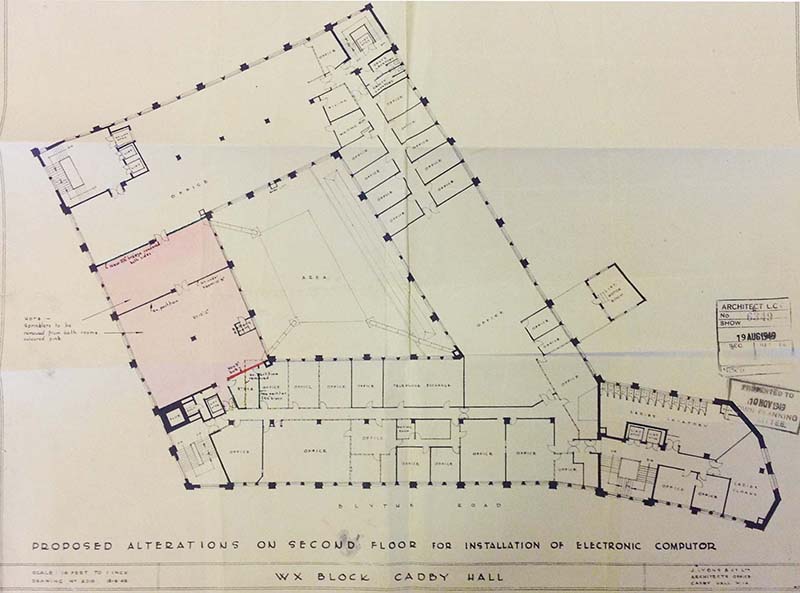|
22nd July 2020
First encounters: This is the first in a series of four blogs about the use of the set of photographs of LEO I that will ultimately enable us to rebuild a virtual LEO.
First encounters
My first encounter with the Lyons Electronic Office (LEO) was through a good book written by Georgina Ferry, called ‘A Computer Called LEO’ and I guess my first glimpse of this remarkable machine was on page 112; a photograph of the room in Cadby Hall, West London. The image showed the installation in one room at Lyons HQ of the LEO computer. It included some peripherals and the extras needed to enable this resource to be useful to Lyons as a function of the business.
When the LEO Society placed the LEO archive with The Centre for Computing History, many boxes arrived and sat on tables at the Centre’s home in Cambridge. I could not resist looking inside and touching history. Amongst the very many documents, there were photographs. They were black and white, all sizes, some copies, a few as slides; but they were a time machine into the past. I was hooked!
From that moment I wondered how many photographs were of LEO I and not the later LEO computers (2 and 3). I thought that we might find perhaps 20 or so glimpses into this world of the 1950s and 60s. Glimpses of a giant machine that was to change the world, its birth and construction, through to the moment it would be operational and helpful to Lyons.
An obsession
Since then it has been a bit of an obsession, how many photographs are there and what would they tell us about LEO? Since that time when I peeked into some archive boxes, I have to date identified 98 photographs that were taken inside the ‘Calculator Room’ at Lyons Cadby Hall. Far more than I could have imagined and all slowly giving up the story of LEO in photographs. Many came from the LEO Archive and others from; Manchester University, University of Warwick, Birmingham Museum, The Getty Collection and the Alamy Collection.
It took a while to find enough evidence to prove that each photograph was indeed LEO I and not the later LEO computers. I feel I know the room intimately and what to look for that will tell me we are in Cadby Hall, Second Floor of the WX building with LEO.

Seeking order
With so many photographs how do you manage them into any order? I could see clues and patterns and questions from the large set of photographs, but they needed more order. The first task was to ask the questions; Where in the room was this photograph taken? and what direction was the photographer facing? Could I build up a better understanding of this room? Sadly, Cadby Hall, the room and the machine have all long since been lost, the photographs are our only real connection with the past.
A visit to the London Metropolitan Archives was rewarded by finding a very large plan of the second floor of the WX building at Cadby Hall. The plan was used by Lyons to propose alterations to what had been the offices of the ‘Ice Cream sales’ dept. Lyons was proposing that the new ‘calculator room’ would be altered to accommodate a giant machine, a machine that would come to be known as LEO. The plan was stamped 19th August 1949.

The plan gave me accurate dimensions for the room and its relationship to the others on that floor. It was a starting point and now I had to place each of the 98 photographs into that room and set their direction.
The PhotoApp
What proved useful was to place these photograph ‘pins’ into a ‘home made’ online web application, that I could use to quickly move from photo to photo to make comparisons and contrasts and extract the stories that groups of photographs were telling me.

You can view the LEO photoApp yourself here:
http://www.computinghistory.org.uk/leodev/photos/
I still argue with myself about the exact position and direction of some of the photographs, but they are good enough to have captured this process and use the photographer’s eyes to come to know that room in which LEO was born. The story that the photographs tell is not one of just a computer, but one of an installation, a laboratory, a workshop, a place of work and a place within the business operations of Lyons.
In part 2 of this series, I will tell you about how I dated the photographs and what that told me about LEO’s lifetime.
Chris Monk
Posted by: Chris Monk
|






